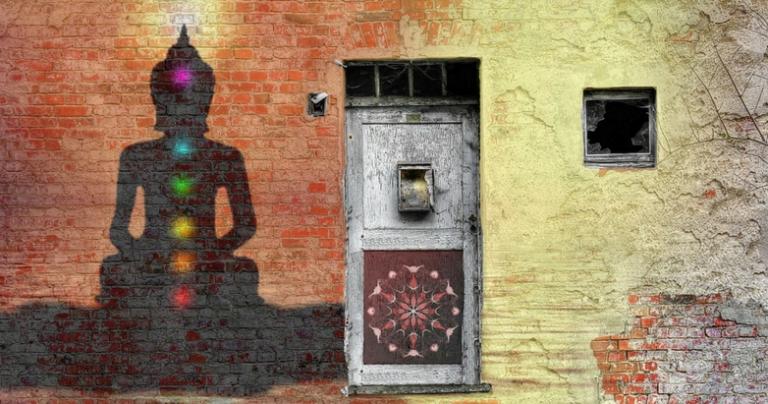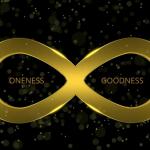
Energy is a lot like electricity. We cannot see electricity, we do not understand the origin of it very well, but we use it all the time. In a similar manner, people use the term energy all the time, to describe their physical, emotional and mental states. They are either full of energy, don’t have enough energy, or are running low on energy, and they talk about other people having or not having energy all the time. This way of relating to energy is not mystical, farfetched or imaginary, but rather quite natural and embedded in our language and culture.
Ancient Psychological and Energetic System
The yogic philosophy of the seven energy centers was the basis of my 2006 book titled The Seven Human Needs. In that book, I made an attempt to explain the energy centers in a practical and metaphorical context while at the same time relating them to modern motivational and psychological material with an emphasis on practical application.
The seven energy centers are such a wellspring of information and inspiration that this short column will hardly suffice to explain all that I have learned and derived from that philosophy, but I will do my best to explain the core ideas and talk about some of the implications and practices it might involve.
A Quick Overview
Here is my overview and interpretation of what the energy centers stand for, where they are situated in relation to the body, and what elements and human needs they represent.
- Survival and Material Energy (Earth) – situated at the base of the spine and represents the need for security.
- Sensory, Creative, Sexual and Pleasure Energy (Water)– situated near the reproductive organs and represents the need for excitement and creativity.
- Power and Self-Worth Energy (Fire)– situated slightly above the navel (solar plexus) and represents the need for individual strength.
- Emotional Energy (Air)– situated near the heart and represents the need for love and relationships.
- Expressive, Relational and Awareness Energy (Ether)– situated in the throat area and represents the need for expression and contribution.
- Intellectual, Intuitive, Purpose and Being Energy (Consciousness)– situated in the forehead between the eyes and represents the need for wisdom and growth.
- Spiritual, Non-dual and Existential Energy (Supreme Consciousness)– situated slightly above the top of the head and represents the need for spirituality.
When these seven energy centers are connected to the body-mind-soul diagram, then the first energy center is representative of the body, the second to the sixth energy centers are representative of the mind and emotions, and the seventh energy center is representative of the Self or soul.
The first thing people generally notice when they look at a map of the human energy system is how complex a human being really is. All these different energies or needs can pull a person in many different directions and that is why it is strongly recommended that we find balance between these energies, elements or needs, so that we can focus on our priorities.
For that purpose, let’s look at the energy centers in a little more detail.
Chakra 1) Survival and Material Energy
The first energy center relates to survival, security and material needs. If it is fairly well balanced we will feel secure and satisfy our needs for clothing, housing, food, and money, in an appropriate manner. An imbalance can present itself when we focus too much on money and become greedy, or, in the opposite direction when we have problems with handling money or are stuck in poverty. An ancient proverb says that we cannot teach people about spirituality before they have been fed. Fulfilling this need in a balanced manner is essential as it is the basis for our material life here on Earth.
It must be noted as a general rule, that if the first energy center gets too much attention it will drain awareness from the other six centers and create a life of imbalance. The same is true of all the other energy centers. If one of them gets too much attention it will draw energy from the others and cause an imbalance.
Chakra 2) Sensory, Creative, Sexual and Pleasure Energy
The second energy center relates to the senses, creativity, sexuality, and pleasure. If it is fairly well balanced then we are in touch with our creative energy, use empowering ways to have fun and remain passionate, can experience pleasure without becoming addicted to it, and so on. An imbalance occurs when we have little or no control over our senses and follow them blindly into any avenue of pleasure without regard for the consequences. An opposite imbalance will likely mean a repression of sensory gratification of any sort, which results in a life without passion, excitement, and fun; a life that has sometimes been related to puritanical elements found within all the major religions. In a sense, the Puritans seem to have become afraid of the sensual and sexual energies and therefore made an attempt to repress and banish them from the human condition. But these energies are forces of nature and cannot be banished. If they are repressed they will surface in very unpleasant ways.
In spiritual terms, the emphasis is on transcendence, not repression, i.e. finding appropriate channels for these energies and focusing them toward higher and more spiritual aims in life.
Chakra 3) Power and Self-Worth Energy
The third energy center relates to power, self-worth and personal strength. If it is fairly well balanced then we have a solid self-identity, good self-worth, personal power, and self-confidence. An imbalance will mean a lack of some or all of the above. An absence of self-worth will affect all the other energy centers negatively because without self-worth a person will not use his or her traits and abilities to their fullest extent and therefore deny the rest of us from ever benefitting from them. An imbalance in the opposite direction can present itself in an excessive need for power—usually based on an inferiority complex—expressed in an extroverted manner. The power struggles involving humanity, from personal to national disputes, often stem from this imbalance.
From a spiritual standpoint, entertain the idea of humble self-confidence, i.e. always being aware of your own strengths but never overestimating them in relation to your position in the universe.
Chakra 4) Emotional Energy
The fourth energy center relates to emotional energy. If it is well balanced we can easily feel and strengthen the emotions of love and compassion in all our relationships. Balance also connotes the ability to channel destructive emotions such as anger, hatred, jealousy, and fear into constructive pathways, thus transforming them into positive emotions. An imbalance will, as in the third energy center, mean a lack of all or some of the above. Excessive or negative emotional expression will certainly be a sign of imbalance.
Spiritual practitioners will, in most cases, bring emotions under a degree of control and become increasingly aware of how emotions affect life.
Chakra 5) Expressive, Relational and Awareness Energy
The fifth energy center relates to expression, relationships, and awareness. If it is fairly well balanced then we can easily express our thoughts and emotions. Although it is situated in the throat, vocal expression is only one form of expression available to a human being. Balanced energy in this area will produce a good communicator. An imbalance will surface in the form of constricted expressions while the opposite extreme may mean excessive communication. This energy center is also referred to as the energy of awareness. Just as we can expand our voice in all different directions, we can also learn to expand our awareness.
A spiritual expression can be seen in the way we use our energies and abilities to contribute to our surroundings and serve our fellow human beings.
Chakra 6) Intellectual, Intuitive, Purpose and Being Energy
The sixth energy center relates to intellect, intuition, purpose and being. If it is fairly well balanced then we are adequately stimulated intellectually, are in touch with our intuition, have a clear purpose in life, crave wisdom and growth, and are inclined to become aware of our own consciousness (the third eye or neocortex). An imbalance can present itself as an excessive emphasis on intellect to the demerit of other elements—like Sir Ken Robinson noted: “Intellectuals feel that the body is just there to move their head around.”—or a lack of intellectual stimulation.
Since this sixth energy center is so closely related to the brain and its functions, many other imbalances can ensue if it becomes imbalanced, especially if we follow the complexity theory, which states that as an organism evolves and becomes more complex, more things can go wrong. For example, a single-celled organism cannot get cancer, but a dog can get cancer. The same seems to be true of intellect or consciousness. The further we evolve, the more can go wrong.
Chakra 7) Spiritual, Non-dual and Existential Energy
The seventh energy center relates to spirituality, non-duality, and existentialism. Balance will mean that we are aware of or connected to our unchanging and ever-present essence. An imbalance will, in many cases, mean complete denial of a spiritual side of the human being and a complete rejection of this need.
Balance is the Keyword
Balance is the keyword in relation to the energy centers. Even though the spiritual devotee’s supreme goal is to transcend the first six energy centers connected to the body and mind and reside in a non-dual state of awareness related to the seventh energy center, the harsh reality is that we must all learn to live in this material world in between our experiences of transcendental bliss. As Jack Kornfield put it so brilliantly: “After the ecstasy comes the laundry.”
The key to understanding balance is to remember that it is not a static state and it cannot be maintained indefinitely. If you try to stand on one leg for a few minutes, you will find that it requires constant attention and refinement. You cannot stand completely still for very long without constantly correcting yourself and swaying from one side to the other, even if the movements are only minor. That is balance in a nutshell.
In order to use the psychology of the seven energy centers effectively, you should keep them in your awareness, think about them as often as possible, try to see which energies are dominant in your life, unveil your imbalances, and steadily try to achieve the temporary balance we all seek. If you give these seven areas the attention they deserve you will deepen your self-knowledge and reap unparalleled rewards in your physical, mental, emotional and spiritual life.
Energy Center Questionnaire
The following energy center questionnaire should only be used as an indicator of energy imbalance, a tool for reflection, more than a tool for diagnosis. A yes answer likely means that you are fairly balanced in that particular area, while a no answer likely means the opposite. Obviously, there are gray areas in between. If you put up a scale from 1 to 10 between yes and no and place your answers on that scale, you may find the questionnaire to be more accurate than if you merely answer yes or no.
- Survival, Security, and Material Energy
- Do you have enough money and material security?
- Do you have an adequate housing arrangement?
- Do you have a secure job or stream of income?
- Do you earn more than you spend?
- Do you feel safe and secure?
- Do you take good care of your health?
- Sensory, Sexual and Pleasure Energy
- Do you feel excited and passionate about life?
- Are you directing and releasing your sexual energy in a constructive manner?
- Are you in control of most of your senses most of the time?
- Have you found an adequate balance between pleasure and discipline?
- Are you free from addiction?
- Power, Self-Worth and Strength Energy
- Are you an energetic individual?
- Are you happy with your levels of self-worth and self-confidence?
- Do you like yourself?
- Can you use your personal power without repressing other people or making them feel inferior to you?
- Emotional Energy
- Do you easily express love and affection?
- Do you easily forgive yourself and others?
- Are you fully responsible for your own emotions?
- Do you try to put yourself in other people’s shoes to understand them better?
- Do you laugh often and easily?
- Expressive, Relational and Awareness Energy
- Can you easily express your thoughts and emotions?
- Do you communicate clearly and effectively?
- Are you an honest person?
- Do you share your knowledge and wisdom with others?
- Is there consistency between what you say and what you do?
- Intellectual, Intuitive, Purpose and Being Energy
- Do you constantly crave more wisdom and knowledge?
- Do you read regularly in your field of interest and/or expertise?
- Do you rely on your intuition as well as your intelligence?
- Does your life have a clear purpose?
- Do you contemplate the mysteries of life?
- Spiritual, Non-dual and Existential Energy
- Do you meditate, pray, or contemplate on a regular basis?
- Have you experienced peace of mind, enlightenment or mystical union?
- Are you drawn to spiritual teachings?
Reflect on these questions or make up your own list of questions in a similar fashion and think about your answers. With awareness, you may start to make some positive changes.
Gudjon Bergmann
Interfaith Minister, Author, and Speaker
Founder of Harmony Interfaith Initiative
Follow me on Facebook and Twitter
This column was curated from my book titled, Living in the Spirit of Yoga
Picture: Pixabay.com CC0 License
















